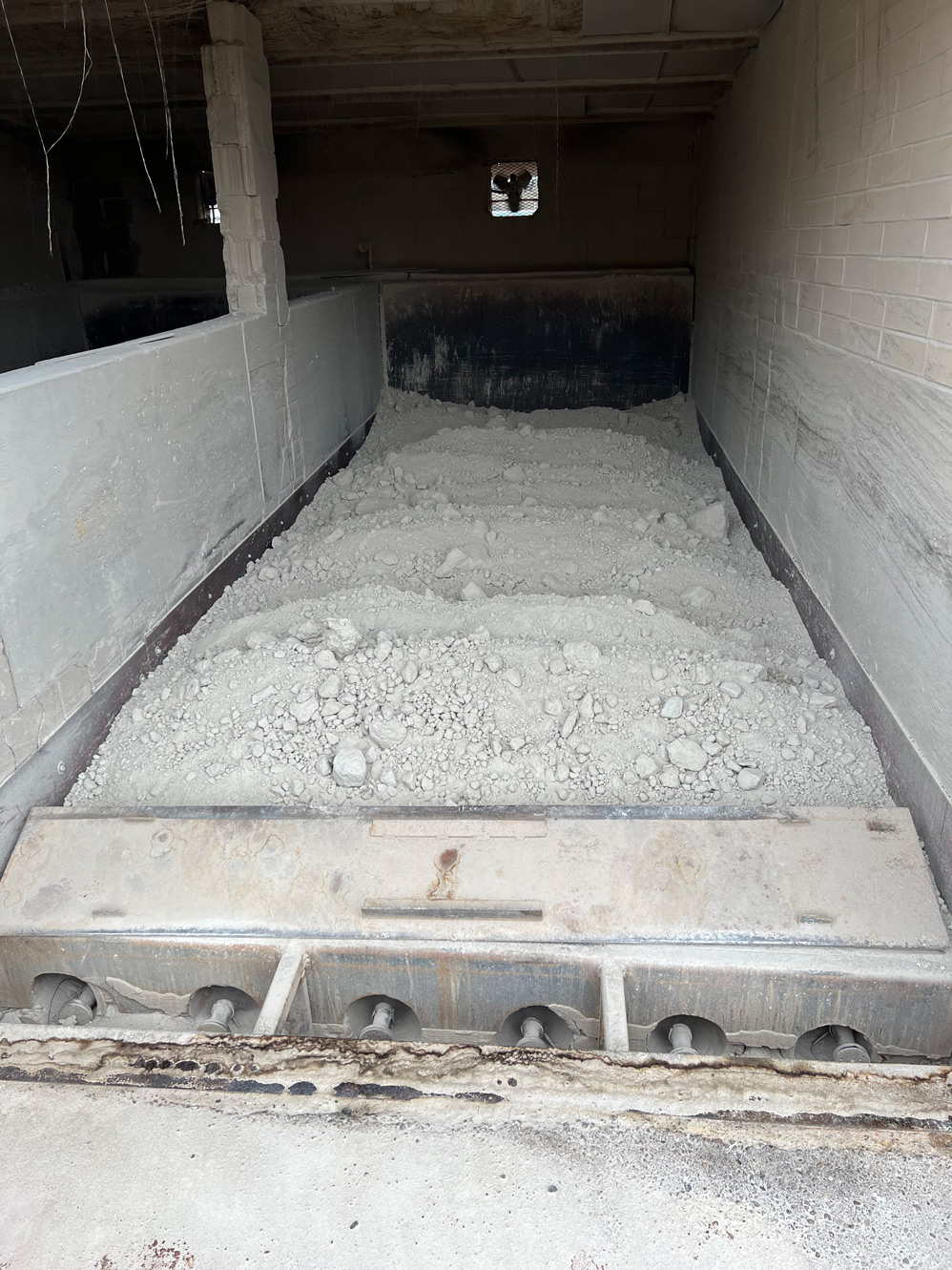| Monthly Tech-Tip | No tracking! No ads! | |
An All-Canadian Fine Ball Clay is in Sight!
On the right is Plainsman A2 ball clay with 35% nepheline syenite added to vitrify it around cone 6 (these bars are fired at cone 2, 4, 5, 6 and 7 - top to bottom). Using our grinding equipment, we can process it to 42 mesh, as we have done since the 1970s. On the left is a Flintoft ball clay (cone 10R top and 10, 9, 8, etc - top to bottom). But this is the raw material, just slaked (not ground). It reaches zero porosity at cone 6 without a feldspar addition (because Mother Nature has added it for us). And the plasticity? This ball clay dry shrinks 9%, it is super plastic, much more than the A2/feldspar mix. While nearby deposits also contain refractory ball clays, this one is truly something special. It enables not just highly plastic vitreous stonewares but it fires white enough to be a potential ingredient in an All-Canadian plastic cone 6 porcelain. In an unexpected turn of events, we now have the opportunity to get this clay in a way that is much easier than expected. We have tested mixing this with PR3D, the best material in our Ravenscrag quarry - together the two can make killer clay bodies!
Related Pictures
Another Saskatchewan Outrop:
We need to pay more attention

This picture has its own page with more detail, click here to see it.
This one is saying: "I am the whitest kaolin in Saskatchewan. And, I am so plastic that even though I am mixed with 50% sand, I can be modelled and formed with no problem. Just remove the sand and you will have a world-class kaolin that is Canadian". W. G. Worster, called these kaolinized sands, which can be found in south central part of the province, "splendid". This outcrop is in Halbrite, a small town southeast of Weyburn. There are lots of other deposits, especially in the Wood Mountain, Flintoft and Claybank area that are also much whiter than anything we currently can get in Ravenscrag. But this one is king so far. Should we keep importing from Georgia or develop our own Canadian kaolin?
El Dorado of Pottery Clay Finally Found!

This picture has its own page with more detail, click here to see it.
It has been five years since getting and testing samples of an amazing porcelain-like, clean-burning, highly plastic middle-temperature stoneware raw material from south central Saskatchewan. It is far superior to anything we have now. But, due to mix-ups, it appeared its location had been lost! But coming here to search again has turned up new information and I am quite certain this is the site (at Flintoft, Saskatchewan). Seeing and walking it has confirmed, contrary to the information we had, that the site is highly suitable for extraction (previous mine workings to the left are not shown). And, it is not the only site in the area. The Whitemud clays here are quite different from those in our Ravenscrag quarry, they are so good they obsolete almost everything we have (except perhaps PR3D). On seeing the range and quality, I am beyond excited! There are a lot of ducks that have to be lined up to be able to actually extract from a site like this, but the location has a lot of advantages. The current economic realities will be a powerful motivator to developing Canadian clay sources.
Here is why new grinding equipment is needed

This picture has its own page with more detail, click here to see it.
These two pieces have been fired to cone 6, without glaze, I use this as a way of comparing changes in the character of the fired surface over time. These are made from a mix of A3 and 3B, our two main raw stoneware clays. The mix has been ground to 42 mesh (using our hammer mill). These materials vary in the amount of sand they contain and the amount of iron stone concretion particulates, so we will also see smoother and more speckle-free than this as a matter of normal variation. We have made sandy and speckled clays like this for so long that they seem normal to me. Yes, rustic bodies do have their appeal. However, the limits of our particle size reduction equipment and current quarry materials have resulted in importing American materials to satisfy customers who want smoother, whiter, more plastic and more vitreous bodies. We are now producing tens of thousands of boxes a year made from these imported materials! Transporting expensive clays at great distances begs the question of why we have not better leveraged the clay resources that are right here. That, and associated independence, quality and lower production costs, are coming soon.
An upgrade to benefit us and "Mother Nature"
Replace our unbelievably inefficient driers

This picture has its own page with more detail, click here to see it.
For efficient powderization, grinding mills need dry clay. But Plainsman driers are unbelievably inefficient; basically they are concrete saunas. Four tons of clay go in each of four; their 22 total burners go night and day for 10-11 months a year. And have done so for the past 50 years!
Thus, the equivalent of two full-blast burner-hours is needed to dry each box of clay from the 8-10% in the raw lump form down to 2-3% moisture. This is enough to fire our large gas kiln to bisque! A paved yard area for simple sun-drying would replace, reduce, or even replace these old driers (summer heat and dry weather are guaranteed here).
The ultimate: A rotary dryer. These are a standard for continuous processing in a wide range of bulk material processing industries (e.g. grains, seed, fertilizers, feeds, cerals, beans, wood chips, sawdust, chemicals, waste products, sand, gravel).
Got a Question?
Buy me a coffee and we can talk

https://digitalfire.com, All Rights Reserved
Privacy Policy

